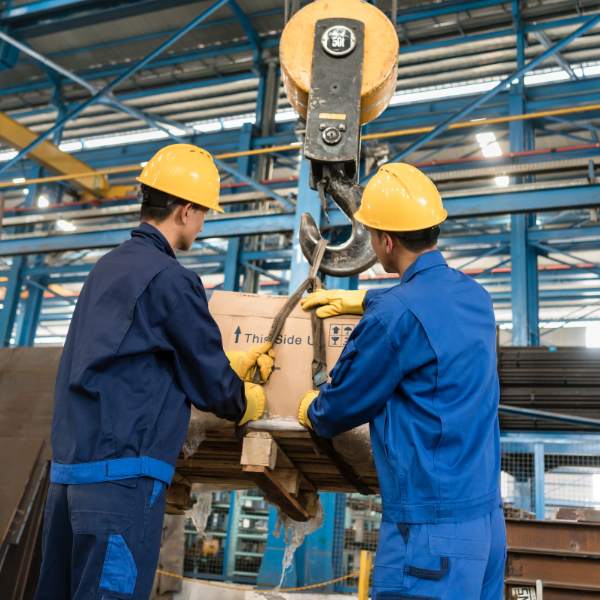The High Cost of Gravity Why HSENI is Targeting Falls in Construction and Farming
What You Really Need to Know
In the high-risk industries of construction and agriculture, the most persistent and deadly hazard remains the oldest one: gravity. Despite stringent regulations and advanced safety equipment, falls from height continue to be the leading cause of fatal workplace accidents across the UK and Ireland.
In response to this ongoing threat, the Health and Safety Executive for Northern Ireland (HSENI) has launched a targeted safety campaign, as reported by NI Business Info. This initiative aims to intensify scrutiny on sites where work at height is taking place, ensuring that adequate control measures are not just documented, but actively implemented.
For HSEQ professionals and business owners, this campaign is a critical reminder that the fundamentals of safety can never be taken for granted.
The Persistent Problem Sector-Specific Challenges
While the principles of working at height are universal, the environments in construction and agriculture present unique challenges.
Construction:
The dynamic nature of construction sites means risks are constantly changing. Hazards include unprotected edges, fragile roofing materials, scaffolding that is improperly erected or maintained, and the pressure to complete jobs quickly, which often leads to unsafe shortcuts.
Agriculture:
Farming often involves lone working and tasks that might seem ‘quick’ but carry significant risk such as repairing barn roofs, accessing silos, or working from ladders in poor weather conditions. The HSA in Ireland frequently highlights that many fatal falls on farms occur during building maintenance.
Complacency is a major contributing factor in both sectors. When work at height is routine, the perception of risk can diminish, leading to critical safety lapses.
The Legal Landscape UK and Ireland
The legal duty to manage work at height is clear and robust across all jurisdictions. While the specific regulations differ slightly, the core message is the same: all work at height must be properly planned, supervised, and carried out by competent persons.
- Northern Ireland: Governed by the Work at Height Regulations (Northern Ireland) 2005, enforced by HSENI.
- Great Britain (England, Scotland, Wales): Governed by the Work at Height Regulations 2005, enforced by the HSE.
- Republic of Ireland: Governed by the Safety, Health and Welfare at Work (General Application) Regulations 2007, Part 4: Work at Height, enforced by the HSA.
Inspectors across all regions look for evidence that a suitable and sufficient risk assessment has been conducted and that the appropriate equipment has been selected and is being used correctly.
Mastering the Hierarchy of Control
-
The cornerstone of managing height safety and the first thing regulators look for is the application of the Hierarchy of Control. HSEQ strategies must rigorously adhere to this sequence:
- AVOID: The most effective control measure is to eliminate the need to work at height entirely. Can the work be done from ground level using extending tools? Can machinery be lowered for maintenance?
- PREVENT: If the work cannot be avoided, prevent a fall from occurring. This is typically achieved using existing safe workplaces or the right equipment, such as:
- Installing permanent guardrails or edge protection.
- Using Mobile Elevating Work Platforms (MEWPs).
- Ensuring scaffolding is correctly designed and erected.
- MINIMISE:
If a fall cannot be completely prevented, minimise the distance and consequence of a fall. This includes using fall arrest systems (harnesses and lanyards, which require specialist training and rescue planning) or safety nets.
A common failing observed by HSENI inspectors is skipping the first two steps and relying immediately on fall arrest equipment, or worse, relying solely on ladders for tasks that require longer duration or greater mobility.
Common Pitfalls and HSEQ Solutions
-
The HSENI campaign emphasizes that many incidents are preventable with basic planning.
- Fragile Surfaces: Never assume a roof is safe. Fragile materials like asbestos cement sheets or aging skylights are a major hazard. Work must be planned to avoid standing on these surfaces, utilising roof ladders or staging platforms. The HSE provides detailed guidance (INDG284) on this critical area.
- Ladder Misuse: Ladders should only be used for low-risk, short-duration work (typically under 30 minutes) and must be secured. Overreaching or carrying heavy loads on a ladder significantly increases the risk of a fall.
- Competence and Training: Ensure everyone involved—from planners to operatives—has the necessary skills, knowledge, and experience. This includes not just how to use equipment, but how to recognise hazards and respond to emergencies.
The HSENI campaign is a wake-up call. Proactive HSEQ management is essential to ensure that every worker who goes up comes down safely.
Are your working at height procedures robust and compliant? AcornStar provides expert risk assessment, safety management system development, and accredited training courses across the UK and Ireland for the construction and agricultural sectors. Contact our HSEQ Consultancy Services today to review your safety protocols.
Are your working at height procedures robust and compliant? AcornStar provides expert risk assessment, safety management system development, and accredited training courses across the UK and Ireland for the construction and agricultural sectors. Contact our HSEQ Consultancy Services today to review your safety protocols.

Safety First What the New EU Toy Safety Regulation Means for UK and Irish Businesses
Safety First What the New EU Toy Safety Regulation Means for UK and Irish Businesses What You Really Need to Know Introduction On 13 October 2025, the Council of the EU approved its position on a new Toy Safety Regulation that will replace Directive 2009/48/EC. The...

What the ISO 9001 and ISO 14001 Revisions Mean
The Future of HSEQ What the ISO 9001 and ISO 14001 Revisions Mean for UK and Irish Businesses What You Really Need to Know Introduction In the realm of Health, Safety, Environment, and Quality (HSEQ), standing still is never an option. The global standards that...

The AI Revolution in HSEQ What the EU’s “AI Factories” Mean for UK and Irish Businesses
The AI Revolution in HSEQ What the EU’s AI Factories Mean for UK and Irish Businesses What You Really Need to Know Introduction Artificial Intelligence (AI) is rapidly moving from a buzzword to an essential operational tool. A recent announcement from the European...

All-Island Alert Safety Authorities Launch Campaign Targeting Deadly Falls
All-Island Alert Safety Authorities Launch Campaign Targeting Deadly Falls What You Really Need to Know Introduction In a major cross-border initiative, the Health and Safety Authority (HSA) in Ireland and the Health and Safety Executive for Northern Ireland (HSENI)...

The Trojan Horse on Wheels Why a UK Scooter Recall is a Major Safety Warning for Irish Businesses
The Trojan Horse on Wheels. Why a UK Scooter Recall is a Major Irish Safety Warning What You Really Need to Know Lessons from a Critical Electrical Safety Failure In the world of workplace safety, the most serious threats often arrive in the most unassuming packages....

A Shock to the System Why the Anker Recall is an Urgent Electrical Safety Warning for Every Irish Business
Fire Hazard Anker Power Bank Recall is a Workplace Wake Up Call What You Really Need to Know The Shocking Truth About Power Bank Hazards In the world of tech accessories, few names are as recognised and trusted as Anker. That is why the recent major recall of their...

Ireland’s New Emergency Network Is Your Lone Worker Safety Plan Still Fit for Purpose?
National Safety Boost Irish Government Launches New Emergency System What You Really Need to Know Enhancing Emergency Services Response Across Ireland In a major step forward for national safety, the Irish Government has announced the launch of a new, state-of-the-art...

The Human Cost of Tech Is Your Irish Workplace Ready for the EU’s Digital Safety Focus?
What EU-OSHA's Seminar Means for Human Factors in Digital Workplaces. What You Really Need to Know Introduction On October 10th, 2025, Europe’s top safety experts will gather for a crucial online seminar hosted by the European Agency for Safety and Health at...

Beyond the Award Are You a ‘Leading Light’ in Driving for Work Safety?
Why the EPA’s 2025 Air Quality Report is a Wake-Up Call for Irish Businesses What You Really Need to Know Introduction Every year, the Road Safety Authority (RSA) shines a spotlight on the individuals, communities, and organisations making a real difference on our...
URGENT New Irish Safety Laws for Manual Handling & Work at Height Effective November 1st
Why the EPA’s 2025 Air Quality Report is a Wake-Up Call for Irish Businesses What You Really Need to Know Introduction In a significant development for workplace safety in Ireland, Minister of State Alan Dillon has signed major new regulations into law, updating the...





